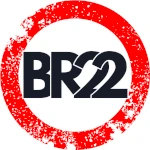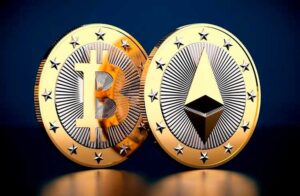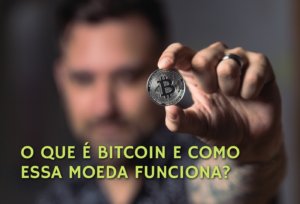The Vanguard token (VWA) promises to be the future of RWAs, but the truth is a warning. Discover the shocking token concentration and the real risk involved.
In the dynamic and often volatile world of cryptocurrencies, the emergence of new tokens is constant. However, not all projects are born with the purpose of innovation or long-term value. This report delves into the case of the Vanguard token (VWA), a digital asset that caught attention in the Solana ecosystem, revealing a complex web of broken promises, misleading marketing, and alarming risks. Our goal is to provide a detailed forensic analysis to equip investors with the knowledge needed to navigate this market safely.
VWA: The Two Faces of a Crypto Project and the Empty Promises of RWA
The Vanguard token (VWA), launched in October 2025 on the Solana blockchain, presents a public identity that is, at best, contradictory. On one hand, it positions itself as a revolutionary Real World Asset (RWA) protocol, promising to tokenize valuable physical assets like gold and silver. On the other hand, it is widely recognized by the crypto community as a purely speculative “meme coin.” This duality is not a mere communication slip; it is a calculated strategy to attract different types of investors.
The RWA Facade: Groundless Promises
The official VWA narrative, broadcast on its website and social platforms, depicts a sophisticated protocol—a “bridge” between traditional finance and blockchain. The slogan “The Future of Tokenized Real World Assets” and the goal of a $23 trillion market aim to capture the attention of serious investors seeking innovation and tangible value. However, investigation reveals a glaring absence of any proof supporting these claims.
A legitimate RWA tokenization project requires complex infrastructure: legal safeguards for the custody of physical assets, transparent verification and auditing processes, and robust regulatory compliance. The value of an RWA token is intrinsically linked to trust in its redeemability for the underlying asset. In the case of VWA, there is no detailed white paper, no technical documentation, no public code repository (like GitHub), nor information about custody and audits. The lack of these crucial evidences means that VWA’s alleged RWA utility is not only unfounded but functionally non-existent, making it, for all practical purposes, fraudulent.
The Underlying Reality: Hype Generation and Pure Speculation
In contrast, VWA’s “meme coin” identity is what actually drives its market activity. Described in communities and data platforms as the “vanguard warrior of Wall Street,” its marketing is thematic and hyperbolic, focused on humor and high-risk speculation. This facet of the project even includes volatility warnings, a common trait in assets driven solely by hype. The absurd claim of being “backed by the renowned S&P 500 ETF” only reinforces this meme coin persona, appealing to an audience that prioritizes trends and quick gains over financial fundamentals. To better understand how market factors impact different crypto assets, check out our analysis on risks and tokenomics in meme coins.
This dual-narrative strategy is a cunning marketing tactic to expand the pool of potential investors. The RWA promise attracts long-term capital, while the meme coin persona captures liquidity from speculative traders. This is not confusion; it is a calculated scheme to maximize fundraising under false pretenses.
Behind the Veil: Genesis, Anonymity, and the Choice of Solana
To unravel the true nature of VWA, it is crucial to analyze its origin and the technical infrastructure that supports it. These details reveal a setup optimized for the rapid and anonymous launch of a crypto project, features often associated with predatory ventures.
The Danger of Anonymity in the Crypto World
The VWA token was launched on the Solana blockchain around October 1, 2025. The project quickly gained notoriety, with daily trading volume exceeding one million dollars just days after its launch on the Jupiter DEX. However, one of the biggest red flags is the complete anonymity of its development team and founders. In a sector dealing with financial assets, team transparency and reputation are fundamental to building trust. Anonymity prevents any form of accountability, whether legal, financial, or reputational, removing any recourse for investors in case of fraud or abandonment. This lack of transparency is a common and deliberate feature in illicit operations.
Solana: Speed and Low Cost, a Magnet for Risky Launches
The choice of the Solana blockchain is not accidental. Known for its high-performance architecture offering high transaction speeds and extremely low costs, Solana is an attractive platform. However, these same features are exploited by fraudulent token creators. Solana’s low-cost environment enables rapid and cheap token deployments, the creation of numerous wallets to manipulate supply distribution, and facilitation of high-frequency trades often driven by bots—typical of “meme coins” and “pump-and-dump” schemes. Essentially, the platform provides the ideal infrastructure for a project designed for a short, extractive life cycle. To dive deeper into Solana’s ecosystem and its market performance, see our article on Bitcoin, Ethereum, and Solana hitting new highs.
The VWA Contract Address: The Only Point of Truth
The sole source of truth for all VWA token activity on the blockchain is its official contract address: GJvLcMvQwznh1gAonWnqbqdSRrNCQmVzhfsZVvQdtM4b. It is imperative that investors verify this identifier, as the existence of other tokens with the “VWA” ticker on other networks, such as Base, serves only to confuse and mislead.
VWA’s tokenomics are simple: a total and maximum supply of 1 billion tokens. While a large fixed supply is typical in speculative assets, what truly matters is its distribution, a critical point we will detail next.
Anatomy of a Fraud: Warning Signs and Irrefutable Evidence
The forensic analysis of VWA not only reveals a lack of legitimacy but also an active, multifaceted deception campaign designed to defraud investors.
Brandjacking and False Endorsements: Creating an Illusion
The deliberate use of the name “Vanguard” and the “Vanguard RWA” brand is a clear case of “brandjacking,” aiming to associate itself with The Vanguard Group, one of the world’s largest asset managers. There is no affiliation between the VWA token and the legitimate company. This is a parasitic tactic to create a false sense of security and legitimacy.
Additionally, the project fabricated partnerships and endorsements. The official VWA account biography on X (formerly Twitter) claimed to be “Backed by @Ripple,” and rumors of integration with SWIFT were aggressively spread. None of these claims were confirmed. The most shocking tactic was circulating manipulated images and spreading the rumor that VWA had been featured in an episode of The Simpsons. The VWA team actively fueled this rumor, generating FOMO (Fear Of Missing Out) among investors. This coordinated disinformation is a direct attack on investors’ critical judgment.
Token Ownership Concentration: The Ultimate Rug Pull Warning
The most damning evidence lies in the on-chain analysis of token distribution. Tools like Bubble Maps confirm that VWA ownership is extremely centralized. Forensic data shows that the top 50 wallets, many linked to the contract deployer’s address, control between 87% and 90% of the total VWA supply. This is the “smoking gun” of the investigation:
- Not decentralized: The project is under absolute control of a small anonymous group of insiders.
- Guaranteed market manipulation: With control of almost the entire supply, these insiders can orchestrate “pump and dump” schemes, artificially inflating the price then liquidating positions, causing the market to collapse.
- Rug pull is highly likely: At any moment, insiders can sell their entire holdings, draining liquidity from trading pools and leaving other holders with worthless tokens.
This on-chain structure is not an accident; it is the mechanism to capitalize on the hype generated by the marketing campaign. Disinformation is the bait, and token distribution is the trap. Understanding tokenization itself is important, but due diligence on the project is crucial. To learn more about real and safe tokenization possibilities, see how tokenization can transform the financial system.
Trading on DEXs: Where Vigilance Is Essential
VWA is not listed on any reputable centralized cryptocurrency exchange (CEX). Its trading is exclusively on decentralized exchanges (DEXs) based on Solana, such as Jupiter. DEXs are permissionless, allowing any token to be listed without verification or audit. This environment is fertile ground for fraudulent tokens, as it lets creators evade the rigorous scrutiny of CEXs. The absence of CEX listings is a strong indicator that VWA would not pass through legitimate due diligence processes. To explore how more legitimate DEXs operate, check out our article on what Hyperliquid is and how it is transforming the perpetual DEX market. Exclusive DEX trading puts the full burden of verification and risk on individual investors.
The comprehensive analysis of the Vanguard token (VWA) leads to definitive conclusions. The convergence of multiple warning signs—from its genesis to its on-chain structure—leaves no room for ambiguity about its nature and the risk it poses. VWA is an anonymous project launched with a deceptive dual-narrative strategy, publicly presenting itself as a legitimate RWA protocol while operating as a purely speculative meme coin. Its declared utility is unfounded, and the coordinated misinformation campaign is evident.
The irrefutable proof of the project’s malicious nature lies in its on-chain structure: approximately 90% of the total token supply is concentrated in the hands of a small group of insiders. This power centralization is a mechanism prepared for market manipulation and a likely “rug pull” scheme. Any investment in the VWA token carries an almost certain risk of total financial loss. The project displays all the classic characteristics of a cryptocurrency scam. The recommendation of this specialist is unequivocal: all interaction with the VWA token and its ecosystem should be avoided.










